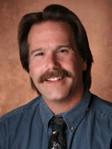
The first article is “Pathophysiology of Gait Disturbance in Neurologic Disorders and Clinical Presentations,” authored by two distinguished faculty from the Gait and Motion Analysis Laboratory at the prestigious Moss Rehabilitation Center in Philadelphia, Drs Theera Vachranukunkiet and Alberto Esquenazi. Dr Esquenazi is the Chairman of the Department of Physical Medicine and Rehabilitation, in addition to being the Director of the Gait and Motion Analysis Laboratory at the prestigious Moss Rehabilitation Center in Philadelphia.
The second article, “Measuring Ambulation in Adults with Central Neurologic Disorders,” is authored by Karen J. Nolan, PhD, Mathew Yarossi, MS, and Arvind Ramanujam, MS. Dr Nolan is a Research Scientist in the Human Performance and Movement Analysis Laboratory at Kessler Foundation Research Center. She has extensive experience in research involving lower extremity 3D movement analysis and pedobarography in patients with acquired brain injury. Her primary research interests involve using a technology-oriented approach to develop objective assessments and measure changes in functional mobility after orthotic and clinical intervention. Dr Nolan is the principal investigator on a multicenter clinical trial investigating neuroprosthetics for ambulation in stroke survivors.
Following is an article on “Gait Analysis for Poststroke Rehabilitation: The Importance of Ground Reaction Forces and the Impact of Gait Speed,” authored by our esteemed editor, Dr Bethoux, and his colleagues, Sylvie Nadeau and Martina Betschart.
“Rehabilitation of Ambulatory Limitations” appears next and is coauthored by Lara A. Pilutti and Audrey L. Hicks. Dr Hicks is also an internationally recognized researcher. Her work focuses on exercise rehabilitation in people with multiple sclerosis, spinal cord injuries, or advanced age, exploring the myriad benefits of increased physical fitness. Using techniques such as muscle biopsies, ultrasound imaging, EMG, and transcranial magnetic stimulation , her work has helped our understanding of the mechanisms underlying exercise-induced improvements in strength or function in these special populations.
Next is the article “Assistive Devices for Ambulation” by Joan E. Edelstein, MA, PT, FISPO, CPed. Professor Edelstein’s day job is teaching students in the physical therapy doctoral program in this very area and she provides a remarkably thorough, user-friendly article.
“Technological Advances in Interventions to Enhance Poststroke Gait” is authored by Drs Lynne R. Sheffler and John Chae from the MetroHealth Medical Center. Dr Chae is known all over the world for his work on electrical stimulation in stroke patients. He was recently elected to the Institute of Medicine of the National Academies, a rare honor reserved for only a small percentage of esteemed academicians and researchers. Dr Sheffler, also faculty at Case Western Reserve University School of Medicine, and Dr Chae provide us with an up-to-date, comprehensive look at how far we have come in helping stroke survivors maintain walking.
Dr Robert W. Motl, an Associate Professor of Kinesiology at the University of Illinois at Urbana-Champaign, discusses “Ambulation and Multiple Sclerosis” in the next article. Touching on all aspects of a functional gait, he gives us useful tips that we can use to help our multiple sclerosis patients maintain walking. Dr Motl’s research interests include pain, spasticity, neural structure and function, social-cognitive variables, disability, and quality of life.
The next article is “Measurement and Treatment of Imbalance and Fall Risk in Multiple Sclerosis Using the International Classification of Functioning, Disability, and Health Model” written by Michelle Cameron, MD, PT and Ylva Nilsagård, PT, PhD. Dr Cameron has looked at these areas as both an internationally recognized physical therapist, and then, following her return to medical school and subsequent postdoctoral training, a physician and neurologist. Ylva Nilsagård, PT, PhD, has studied using self-reported measures to help identify people with multiple sclerosis at increased risk for falls and other trauma. They provide a thorough overview of this area and show us how we can decrease the risk of falls in these patients.
Our issue concludes with articles focusing on ambulation in two different disorders: spinal cord injury and Parkinson disease. Drs Elizabeth C. Hardin, Rudi Kobetic, and Ronald J. Triolo coauthor the article, “Ambulation and Spinal Cord Injury.” Dr Hardin brings her skills as a scientist at the Veteran’s Medical Center in Cleveland, where she has been principal investigator on a grant project on neural prostheses and gait performance. Drs Kobetic and Triolo are also widely published in this area.
“Ambulation and Parkinson Disease” is authored by Drs Shinichi Amano, Ryan T. Roemmich, Jared W. Skinner, and Chris J. Hass, all esteemed researchers. The lead author, Dr Amano, has particular interests in the postural control of gain and balance in persons with Parkinson disease.
As always, I express my sincerest thanks and gratitude to all of the authors who put tremendous effort into making this a truly outstanding collection of up-to-date, cutting-edge articles that will help all of us provide the absolute best care to our patients with CNS neurodegenerative disorders. My congratulations also to our editor, Dr Francois Bethoux, for putting this together.
Stay updated, free articles. Join our Telegram channel

Full access? Get Clinical Tree







